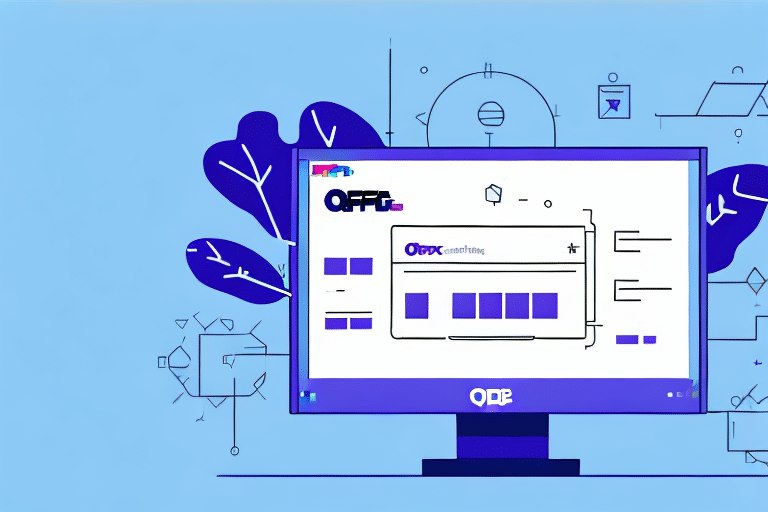Setting Up FedEx Ship Manager ODBC Using a View
Efficiently managing your shipping operations is crucial for any business. FedEx Ship Manager ODBC offers a robust solution by integrating all your FedEx shipments and data into a streamlined, user-friendly interface. This guide provides an in-depth analysis of setting up and optimizing FedEx Ship Manager ODBC to enhance your shipping workflow.
Understanding FedEx Ship Manager ODBC
FedEx Ship Manager ODBC is a comprehensive shipping tool designed for businesses of all sizes. By utilizing Open Database Connectivity (ODBC), it seamlessly connects to your database, integrating all shipment-related data. This integration ensures a more efficient and streamlined shipping process, reducing manual intervention and minimizing errors.
One of the standout features of FedEx Ship Manager ODBC is its ability to provide real-time tracking information. According to FedEx, businesses using their Ship Manager have reported a 30% increase in shipment accuracy and a significant reduction in delivery times (FedEx Press Releases). Additionally, the tool enables the generation of customized reports, offering valuable insights into shipping activities such as the number of packages shipped, delivery times, and overall shipping costs.
FedEx Ship Manager ODBC also offers a variety of shipping options tailored to your business needs. Whether you require overnight delivery, 2-day shipping, or ground shipping, the tool accommodates your preferences. Furthermore, it simplifies the process of scheduling pickups, printing shipping labels, and managing shipping documents—all within a single interface.
Benefits of Using FedEx Ship Manager ODBC
Implementing FedEx Ship Manager ODBC into your shipping workflow offers numerous advantages:
- Automation: Streamline the shipment process to save time and reduce manual tasks.
- Data Accuracy: Minimize manual data entry errors and eliminate duplicate entries.
- Real-Time Tracking: Monitor the status of all shipments in real-time, ensuring timely deliveries.
- Customized Reporting: Generate detailed reports to gain insights into shipping performance and costs.
- Integration: Easily integrates with existing systems, enhancing overall workflow efficiency.
By leveraging these benefits, businesses can enhance their shipping accuracy, reduce operational costs, and improve customer satisfaction.
Requirements and Setup for FedEx Ship Manager ODBC
Before setting up FedEx Ship Manager ODBC, ensure you have the following prerequisites:
- A Windows-based computer
- An active FedEx account
- Access to an ODBC-compliant database
- Administrative privileges on the installation computer
Additionally, configuring your firewall settings is essential to allow the software to communicate with FedEx servers. This ensures seamless data transfer and real-time tracking capabilities.
Installing and Configuring FedEx Ship Manager ODBC
Follow this step-by-step guide to install and configure FedEx Ship Manager ODBC:
- Visit the FedEx website and download the FedEx Ship Manager ODBC software.
- Run the downloaded installer and follow the on-screen instructions to complete the installation.
- Open FedEx Ship Manager ODBC and input your FedEx account credentials to establish a connection.
- Connect to your ODBC-compliant database by entering the necessary database details.
- Configure your shipping settings, including shipment notifications and billing preferences.
- Test the connection and settings to ensure everything is functioning correctly.
- Refer to the FedEx Ship Manager ODBC user guide for troubleshooting any installation or configuration issues.
- Regularly check for software updates on the FedEx website to maintain optimal performance.
Creating and Managing Views in FedEx Ship Manager ODBC
Creating customized views in FedEx Ship Manager ODBC allows you to tailor the data to your specific business needs. Follow these steps to create a view:
- Identify the tables and data fields relevant to your shipping operations.
- Utilize your database management tools to create a new view, incorporating the selected tables and fields.
- Test the newly created view to ensure it displays the expected data accurately.
- Open FedEx Ship Manager ODBC, select the created view, and adjust any necessary settings.
- Begin managing your shipments using the customized view to enhance efficiency.
By organizing your shipping data into specific categories, you can streamline your operations, reduce errors, and adapt to changing business requirements more effectively.
Troubleshooting Common Issues
While setting up FedEx Ship Manager ODBC, you might encounter the following common issues:
- Incorrect Information: Ensure all entered information is accurate to prevent connection failures.
- Database Connection Issues: Verify your database settings and network connectivity.
- Operating System Incompatibilities: Confirm that your system meets the software's requirements.
- Network Problems: Check firewall and network settings to allow necessary communications.
Additional troubleshooting steps include:
- Reviewing and correcting configuration settings.
- Contacting your IT department for permission-related issues.
- Reinstalling the software to resolve potential installation glitches.
- Consulting the FedEx support team for persistent issues.
Best Practices for Optimizing Your Shipping Workflow
To maximize the benefits of FedEx Ship Manager ODBC, consider implementing the following best practices:
- Organize Shipping Data: Create multiple views to categorize your shipping data effectively.
- Automate Processes: Utilize automation features to minimize manual tasks and reduce errors.
- Explore Features: Familiarize yourself with all available features and settings to fully leverage the software.
- Keep Software Updated: Regularly update the software to access the latest features and security improvements.
- Analyze Shipping Data: Regularly review analytics to identify trends, optimize routes, and reduce costs.
By adhering to these best practices, businesses can enhance their shipping efficiency, lower operational costs, and improve overall customer satisfaction.
Integrating FedEx Ship Manager ODBC with Other Shipping Platforms
For businesses utilizing multiple shipping platforms, integrating them with FedEx Ship Manager ODBC can centralize shipping data management. To achieve seamless integration:
- Identify the shipping platforms you wish to integrate with FedEx Ship Manager ODBC.
- Consult with the respective platform's support team to ensure compatibility and obtain integration guidelines.
- Map the necessary data fields between FedEx Ship Manager ODBC and the other platforms to ensure accurate data transfer.
- Configure the settings within FedEx Ship Manager ODBC to manage data from multiple sources effectively.
- Test the integration thoroughly to confirm that data synchronization works as intended.
Integrating multiple shipping platforms can significantly enhance operational efficiency by providing a unified view of all shipping activities. This consolidation aids in better decision-making, reduces the risk of errors, and streamlines the overall shipping process.
Implementing and optimizing FedEx Ship Manager ODBC not only simplifies your shipping management but also provides actionable insights through detailed reporting and real-time tracking. By following this guide and adhering to best practices, your business can achieve a more efficient and reliable shipping workflow.






















